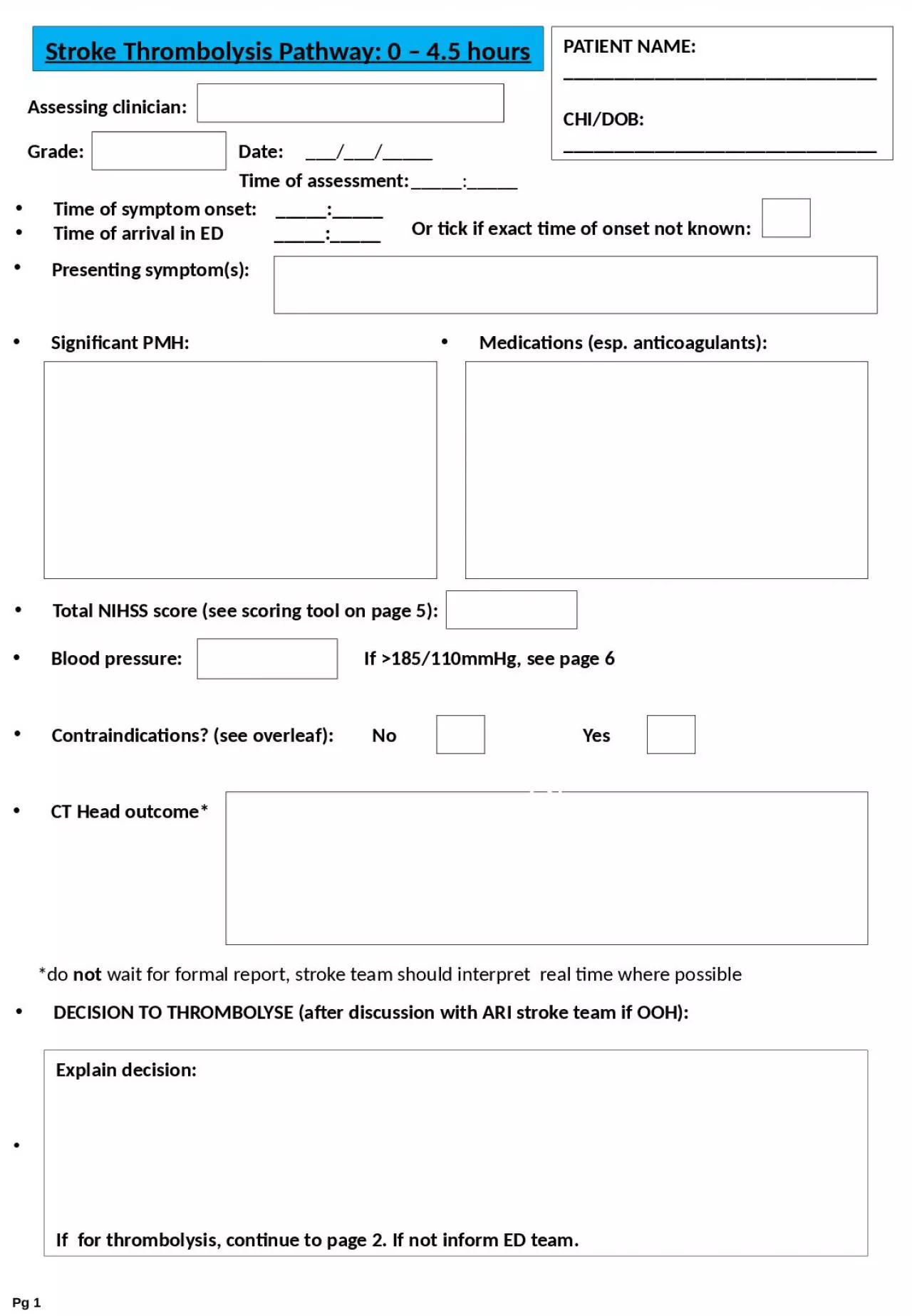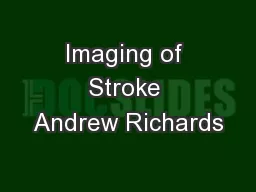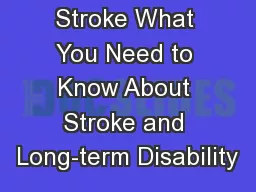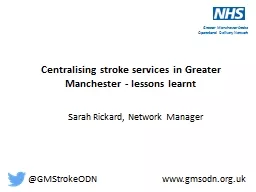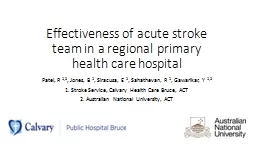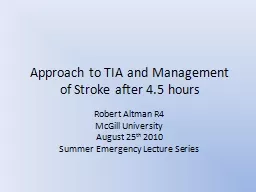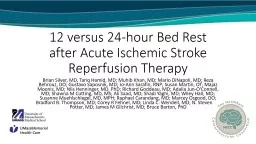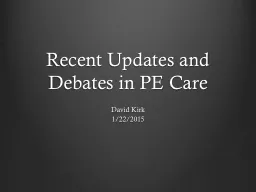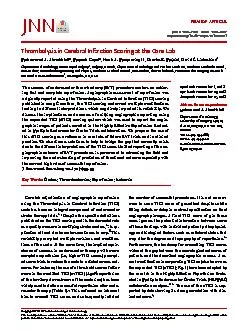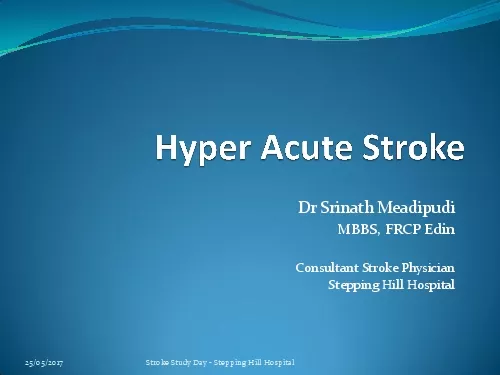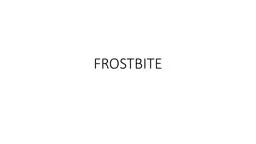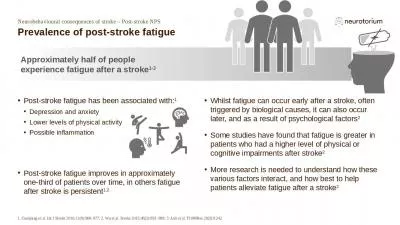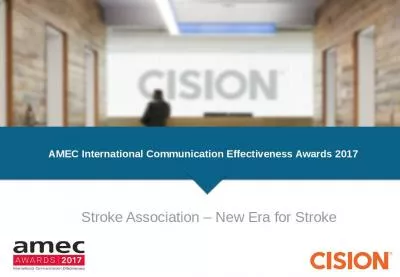PPT-Stroke Thrombolysis Pathway: 0 – 4.5 hours
Author : cappi | Published Date : 2024-02-03
Assessing clinician Time of symptom onset Time of arrival in ED Presenting symptoms Significant PMH Medications esp anticoagulants Total NIHSS score see scoring
Presentation Embed Code
Download Presentation
Download Presentation The PPT/PDF document "Stroke Thrombolysis Pathway: 0 – 4.5..." is the property of its rightful owner. Permission is granted to download and print the materials on this website for personal, non-commercial use only, and to display it on your personal computer provided you do not modify the materials and that you retain all copyright notices contained in the materials. By downloading content from our website, you accept the terms of this agreement.
Stroke Thrombolysis Pathway: 0 – 4.5 hours: Transcript
Download Rules Of Document
"Stroke Thrombolysis Pathway: 0 – 4.5 hours"The content belongs to its owner. You may download and print it for personal use, without modification, and keep all copyright notices. By downloading, you agree to these terms.
Related Documents

